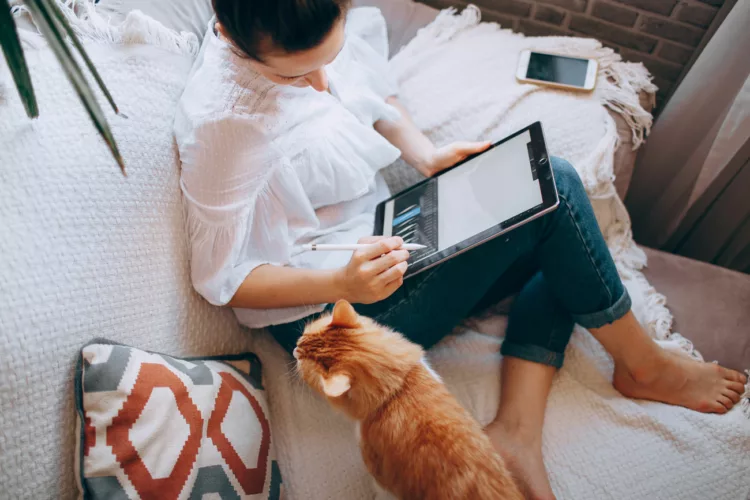Remote Wellbeing Support – How to best support a WFH colleague or employee

Is it possible to feel lonely, even when you’re interacting with dozens of colleagues every day?
Absolutely it is – particularly since Covid and the move for more employees to work from home.
According to data from the Department of Digital Culture, Media and Sport (2021), the cost of loneliness to UK employers is an eye-watering £2.5 billion every year.
Loneliness is just one of the wellbeing issues increasingly reported among employees who work remotely, and it is vital that businesses respect this reality and do all they can to ensure staff are supported.
“Highly recommended”
“Extremely helpful, Gave great advice, Quick on responding to any questions.” Read the full review
As with so many things we suggest here at MAD-HR, it starts with ‘culture’.
Whatever your scale of business, you can set the tone for how staff feel and experience their daily lives.
Emphasising connection, relationship-building, collaborative working and frequent team engagement, can all prove a dramatic benefit in limiting the way in which loneliness is felt (if at all).
There are key points in an employee’s work cycle, where one could easily expect there to be more vulnerability to loneliness and low well-being. This might include at the point they join the firm, that they return from a period of sickness or maternity, or because of something entirely unrelated to work.
Leaders should work hard to ensure that person is mentored, supported, and has the opportunity to relay how they are feeling at all times.
Some businesses also address well-being issues with directly appointed ‘champions’ within the company. These champions might be trained mental health first aiders, and would be primed to support their peers with conversation wherever needed.
Other ways of enhancing well-being, might include regularly changing which staff are ‘teamed’ together for particular initiatives or projects. Tackling a task with different remote-working colleagues can spark new conversation and debate, and allow individuals to shine where they might not have felt it possible alongside other peers.
Remember that even where your staff are continuing to ‘work remotely’, there are many ways of using technology to ensure that person is frequently part of the daily worplace conversation, and that they can be involved in social activities.
Post-covid, do remember that it’s possible, and appropriate to add in ‘in person’ socialisation too. You could have frequent team days, walk and talk opportunities, or all attend key business networking events together.
Finally, always encourage your own staff to contribute on what they feel would aid the reduction of loneliness in your particular workplace.
They know its people, its culture and its routine. Their insight can help you develop a prevention policy which supports all your current and future employees, and aid you in providing a shining example to other business peers.



